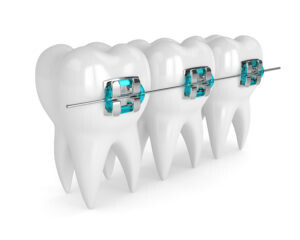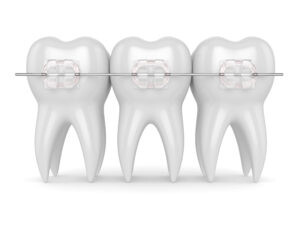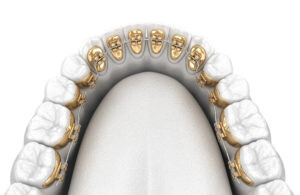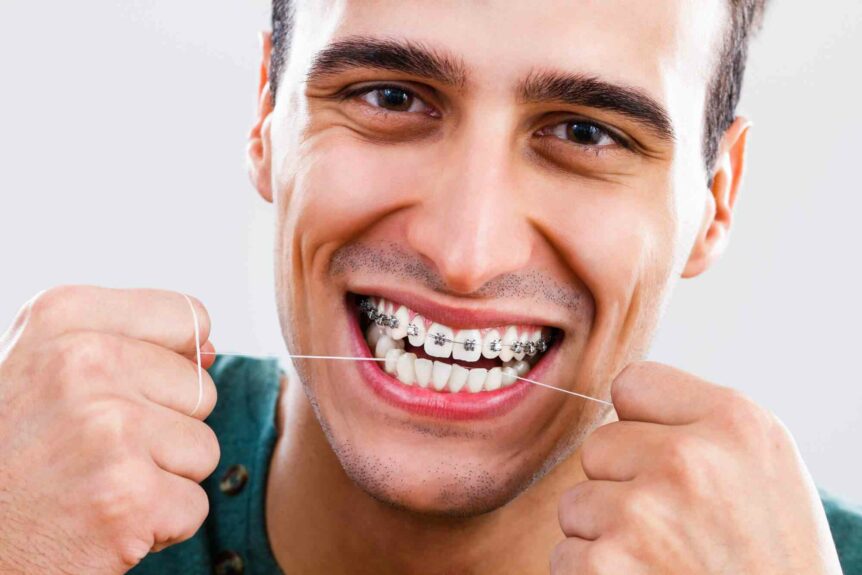Should Adults Get Braces?
Many people get braces as a child or teenager to straighten their permanent teeth. However, over time, the teeth can move back into their original positions, resulting in crooked teeth again. This is especially true if you do not regularly wear a retainer, which is a device that keeps your teeth in alignment after treatment.
Due to these issues, many adults invest in another round of orthodontic treatment if they have a bad bite and/or crooked teeth that worsen with age. On the other hand, other people may be undergoing treatment for the first time.
One in five orthodontic patients is an adult. The main reason adults seek treatment is to improve their smile and boost their confidence. Proper teeth alignment also boosts your oral health and overall health.
American Association of Orthodontists
Adults of any age can get braces or aligners. Some adults also seek treatment to realign their teeth after the placement of dental crowns, implants, or veneers.
If you have any of the following misalignment issues, you may be a candidate for orthodontic treatment as an adult:
- Crooked teeth
- Crowded teeth
- Misplaced or spaced teeth (diastema)
- Overbite
- Underbite
- Open bite
- Deep bite
- Facial or jaw irregularities
The Difference Between Adult and Childhood Orthodontics
The most common age group that receives orthodontic treatment is children between 10 and 14 years of age. This is because all of their permanent teeth have grown in.
Any dental crowding and bite or alignment issues are also evident during the teenage years, making it an ideal time to get braces. Many of these children also get their braces on and off before high school begins.
The main difference between adult and childhood orthodontics is that there are fewer treatment options available.
For example, getting braces as a child or teenager allows for the use of other devices, if necessary. These devices include headgear, space maintainers, and/or palatal expanders.
Adults cannot use these orthodontic appliances because their jaws are fully developed, whereas a child’s jaw is still growing.
Types of Braces — 4 Common Treatment Options for Adults
Depending on your needs and desires, your orthodontist may recommend any of the following treatments:
1. Traditional Braces
Traditional metal braces are an affordable and effective treatment option. Metal braces fix severe or mild teeth crowding, most bite issues, and spaced teeth, among others.
The brackets on metal braces are gold or silver, with o-shaped rubber bands that tie around each one. Traditional braces are also durable, strong, and can withstand most treatment forces.

Traditional metal braces are common among children and teens. Adults can also get them if they do not mind having visible brackets on their teeth for a long period of time.
2. Ceramic Braces
Ceramic braces, which are often called “clear braces,” are similar to traditional metal braces because they have the same functionality. They are also the same size and shape as metal braces.

However, ceramic braces consist of archwires and tooth-colored brackets, rather than silver or gold brackets. The o-shaped rubber bands around each bracket are also clear or white. This allows them to blend in better with your natural teeth.
While clear braces are still visible, many adults and teenagers prefer them over metal braces because they are more aesthetically pleasing.
3. Lingual Braces
Lingual braces are also metal braces. However, instead of attaching to the front of your teeth, they are placed on the back of your teeth. They are the least visible form of metal braces but can be more uncomfortable since they are closer to your tongue.

4. Clear Aligners
Clear aligners are a relatively new and popular form of orthodontic treatment. Invisalign is the most widely known and reputable brand. These aligners are a great option for younger and older adults because they are nearly invisible and removable.
In other words, you will not have metal brackets and wires glued to your teeth.

Although there are many benefits of clear aligners, the main disadvantage is that they require upkeep. More specifically, you must remember to wear them for at least 22 hours per day. You’ll also receive a new set of aligners every one to two weeks.
It is essential to purchase clear aligners from a qualified orthodontist, not through remote websites. This ensures you get the safest and highest quality treatment available.
Clear Aligners vs Metal Braces
If the clear aligner treatment is being performed by a dentist or orthodontist, they will see the patient regularly throughout treatment to monitor tooth movement. Invisalign patients must visit their orthodontist every six weeks (every three aligners). People with braces will also visit their orthodontist regularly for check-ups and adjustments.
Aligners are also virtually invisible, removable, and easier to clean than braces. Traditional, lingual, and ceramic braces are difficult to clean and eat with and are not as comfortable (for some people). Lastly, metal braces are also less aesthetically pleasing than aligners because they are not removable or “invisible.”
On average, clear aligner treatment takes between 12 and 18 months. Braces must be worn for 18 months to two years.
Advantages of Adult Braces
There are many benefits of adult braces. The primary advantages include:
- They enhance the appearance of teeth, improve facial structure, and boost self-confidence.
- Not only do braces improve your dental health, but they also improve your general health. More specifically, straight teeth are easier to brush and floss, which helps prevent tooth decay and gum disease. In addition, if your teeth and gums are healthy, your body will be as well.
Orthodontic Treatment and Gum Disease
There are two types of gum disease, including gingivitis (mild) and periodontitis (severe). If you have been diagnosed with one of these diseases, it is crucial to visit a periodontist for treatment.
You should not seek orthodontic treatment if you have untreated gum disease. This is because there is a high chance treatment will be ineffective, especially if the supporting structures of your teeth are damaged. If this is the case, braces and aligners may cause more damage.
Costs of Braces for Adults
Braces cost anywhere between $2500-$8000, whereas clear aligners cost anywhere between $3500-$8000. The cost typically depends on the length of treatment, the type of braces, and where you live.
Are Braces Covered By Insurance For Adults?
In many cases, insurance does not cover orthodontic treatment for adults, but payment plans may be available through your orthodontist.
However, some plans do provide adult orthodontic benefits, which can be applied to any of the types of orthodontic treatment above. Check with your insurance carrier to find out which benefits your current plan provides.
Adult Braces: Questions and Answers
What type of braces are best for adults?
Ceramic braces are the most popular type of braces among adults. Ceramic braces consist of archwires and tooth-colored brackets, rather than silver or gold brackets. The o-shaped rubber bands around each bracket are also clear or white. This allows them to blend in better with your natural teeth.
Are braces good for adults?
Adults benefit from braces just as much as children and teenagers do. If you are looking to improve your smile and boost your self-esteem, braces are a great option.
Clear aligners are also beneficial for straightening teeth. Aligners are nearly invisible and removable, which is convenient for many adults. If you only have a few crooked teeth, veneers are another great option.
Do braces take longer for adults?
Unlike children, an adult’s jaw is no longer growing, which may lead to longer treatment time with braces. Children and teens typically wear braces for 16 to 24 months. Adult patients wear braces for an average of 18 months to three years.
How painful are braces for adults?
The discomfort associated with braces is the same for children, teens, and adults. During the first few days after getting braces, you may experience soreness and have discomfort while chewing. This should pass after a couple days.
Can you get braces for free?
If you qualify for Medicaid, you may be able to get free braces as an adult.
Can you be too old to get braces?
There is no age limit for braces. You can straighten your teeth at any time, no matter how old you are.

